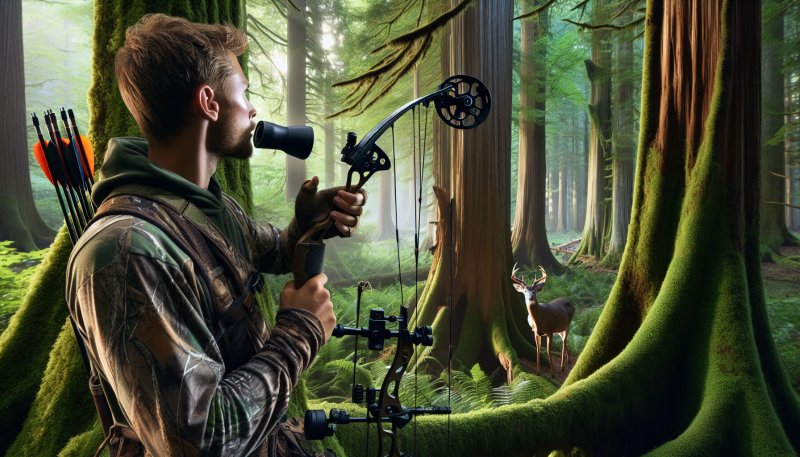For successful turkey hunting, using decoys can be a game changer. Decoys can help attract turkeys towards your hunting spot and increase your chances of a successful hunt. Here are some decoying strategies to consider for your next turkey hunting trip.
When setting up decoys, make sure they are placed in a visible spot where turkeys can easily spot them. It's best to set up decoys in an open area where turkeys feel comfortable approaching. Also, try to place decoys in a way that simulates a natural setting, such as a feeding or breeding scenario, to make them more enticing to curious turkeys.
Using a combination of hen and tom decoys can be effective in luring in a dominant tom who may be looking for a mate. The sight of a hen decoy paired with a strutting tom decoy can trigger a tom's territorial instincts and draw him towards your setup. Experiment with different decoy setups to see what works best in your hunting area.
One important tip to remember when using decoys is to remain patient and still. Avoid making sudden movements that can alert turkeys to your presence. Let the decoys do the work of attracting turkeys towards you, and be ready to take your shot when the opportunity presents itself. With the right decoying strategies, you can greatly increase your chances of a successful turkey hunting trip.
Mastering the Art of Turkey Calling
The box call is one of the most popular and easy-to-use turkey calls, making it great for beginners. To use a box call, simply hold the box in one hand and the paddle in the other, then drag the paddle across the lip of the box to create a realistic turkey sound. Another popular turkey call is the slate call, which mimics the sound of a hen turkey by rubbing a striker across the surface of the slate. This call requires a bit more finesse and practice to master, but can be highly effective in luring in wary toms.
For hunters looking for a more versatile call, the diaphragm call is a great option. This call is placed inside the hunter's mouth and requires no hands to operate, making it perfect for when you need to stay perfectly still. To use a diaphragm call, simply exhale while making the desired turkey sound to produce a lifelike call that will have gobblers coming your way. Whether you choose a box call, slate call, or diaphragm call, mastering the art of turkey calling is sure to improve your hunting success and bring you one step closer to a trophy tom.
Tips for Turkey Hunting in Different Terrains
Whether you're hunting for turkey in the thick forests of the northeast or the rolling fields of the midwest, the terrain you're in can greatly affect the success of your hunt. Here are some tips for hunting turkey in different terrains.
In dense forests, it's important to move quietly and slowly. Turkeys have excellent eyesight and will spot you easily if you're not careful. Use natural cover to your advantage and try to blend in with your surroundings. Additionally, calling techniques may need to be adjusted in heavily wooded areas to account for the echoing of sound.
When hunting in open fields or meadows, it's crucial to have a good vantage point. Turkeys are more likely to spot movement in these wide-open spaces, so finding a good spot with plenty of cover to hide behind is key. You may also need to adjust your calling techniques to account for the lack of natural cover and potentially far distances for the turkeys to hear your calls.
In hilly or mountainous terrain, it's important to be prepared for the physical demands of the terrain. Make sure you're in good shape and able to handle steep inclines and rough terrain. Additionally, be mindful of the wind and how it may carry your calls, as sound can travel differently in hilly areas. Adapt your hunting strategy accordingly to increase your chances of a successful hunt.
Essential Gear for a Successful Turkey Hunt
When it comes to turkey hunting, having the right gear can make all the difference in a successful hunt. Here are some essential items you'll want to have in your pack before heading out into the woods.
First and foremost, a good turkey call is a must-have for any turkey hunter. Whether you prefer a box call, slate call, or mouth call, practicing with your chosen call to master a variety of turkey sounds is crucial for attracting birds to your position.
Camouflage clothing and a quality turkey vest are also essential gear for a successful hunt. Turkeys have keen eyesight, so blending in with your surroundings is key to avoid being spotted. A turkey vest will not only keep your gear organized and easily accessible, but it will also provide extra padding for those long hours of sitting and waiting.
Lastly, don't forget your decoys. While not always necessary, decoys can be a game-changer in bringing a curious turkey within shooting range. Consider using a combination of hen and tom decoys to create a realistic setup that will entice nearby birds to come investigate.

